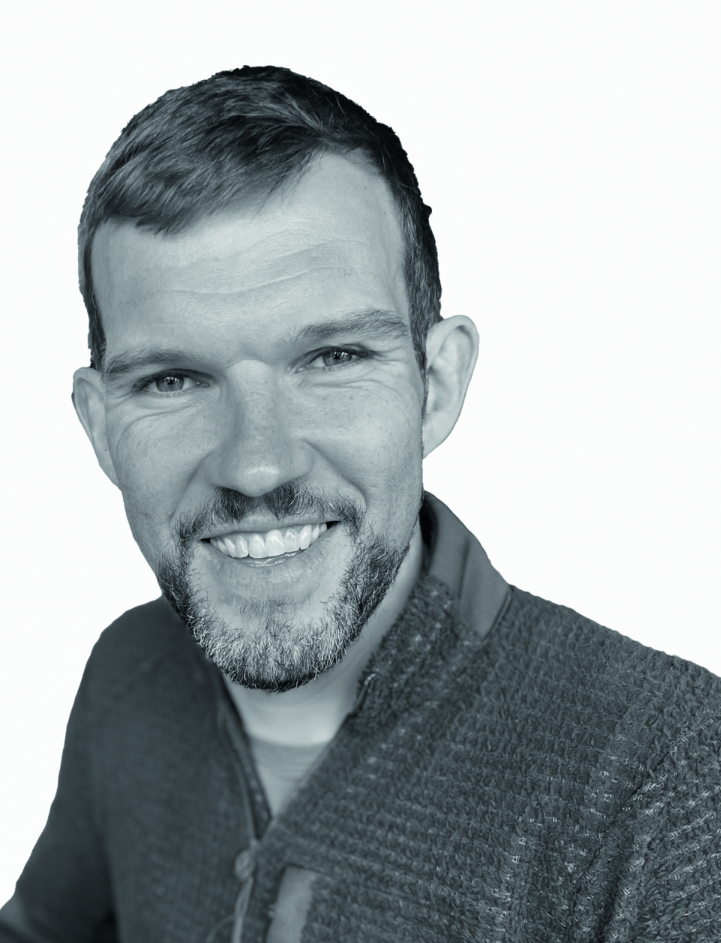I got ultra-fit over 40 - and you can, too
Having quit serious training for a life on the road, Marcus Leach has a change of heart upon turning 40 – and decides it’s time to get back in the hurt locker
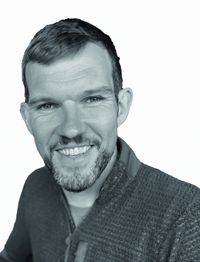
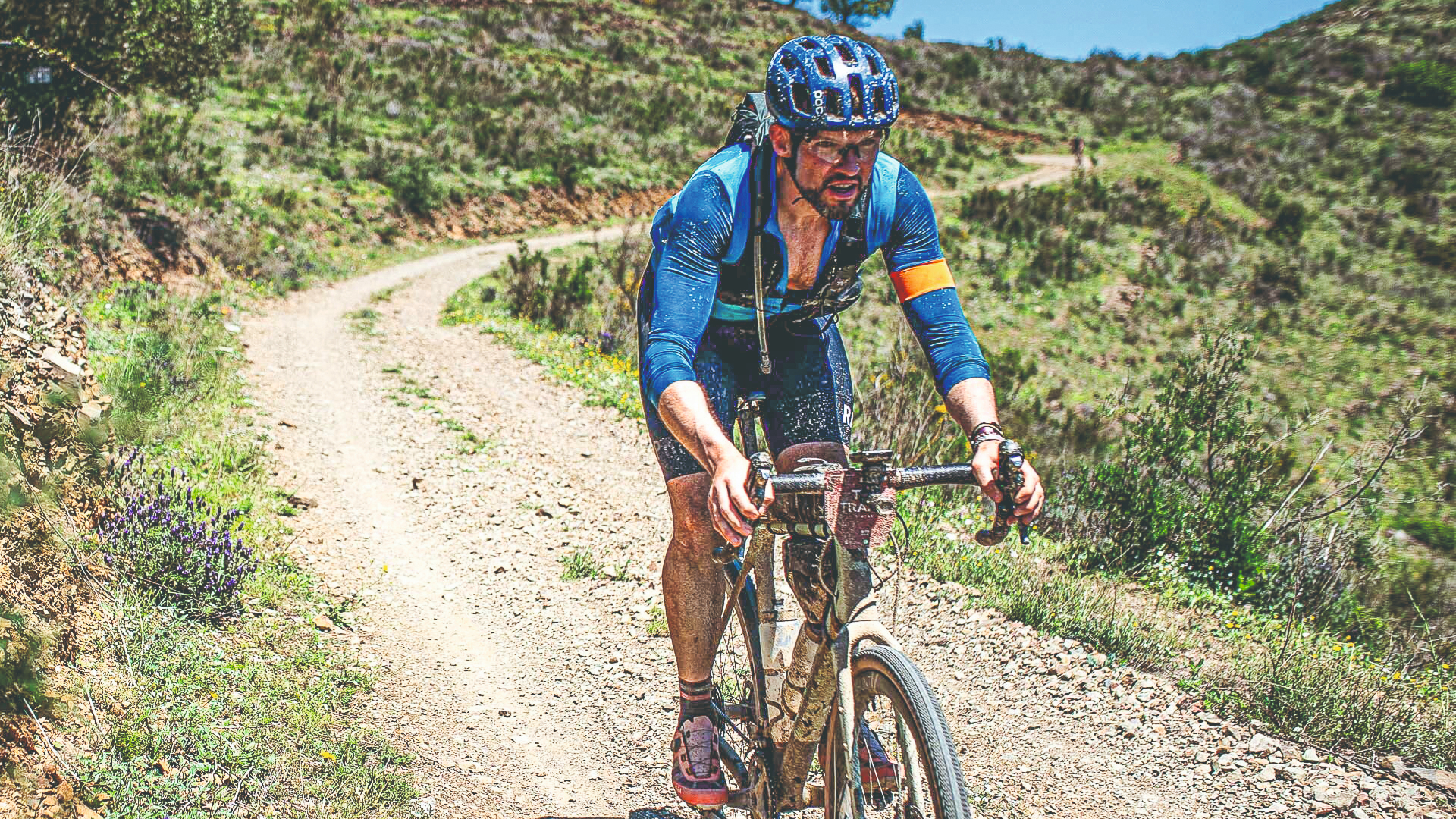
I glance down at my Wahoo head unit as it ticks up to 300 kilometres. I’ve been riding for over 14 hours now and yet, as the little voice in my head is quick to remind me, there’s still another 42km to go. With darkness setting in and technical singletrack up ahead, I know I have to stay focused to make it back to Girona and the finish line of the Traka, one of Europe’s premier long- distance gravel races.
My being here, deep into a race that attracts elite-level gravel riders from around the world, is the culmination of a four-month journey, one that required me to dedicate myself to a rigorous training regime. I knew I’d have to train harder than ever before if I was to be physically and mentally prepared for one of the longest days I’d ever spend on a bike. That was the plan, at least, when I began the process at the start of the year, signing up for what was billed as the Traka Adventure, a 560km ultra race combining the gravel roads of Catalunya with several high mountain passes in the Pyrenees.
Why had I decided to take on the fearsome Traka, you may well ask. Though I’d never attached much significance to age, when I recently turned 40, I found myself wanting to roll back the years to a time when endurance challenges were a mainstay of my life. Back in 2017, I rode the full parcours of all three Grand Tours, riding one day ahead of the professional peloton, which opened the door to a brief foray into the world of ultra cycling. That was until life took over and work, plus husband and dad duties, became increasingly difficult to juggle with the demands of training for, and competing in, such events. Two years ago, my wife and I had decided to up sticks and live full-time in a motorhome, travelling the world, so cycling inevitably became less about performance and more about the simple joy of being on two wheels. While I still kept relatively fit, there was no need for structured sessions – until now. With the Traka goal set, it was time to leap back into serious training.
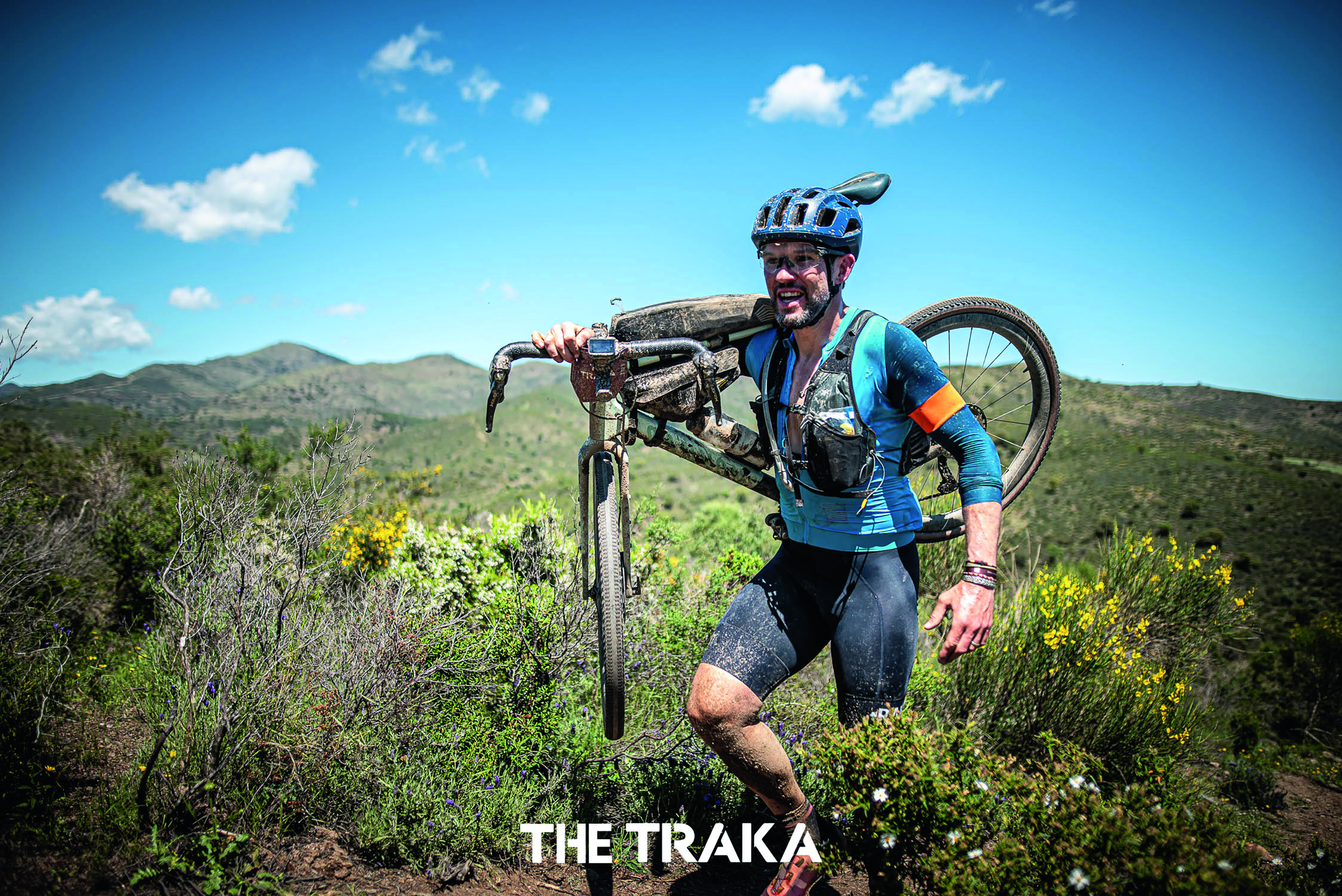
Boosting threshold power and muscular endurance were key goals
Back on Traka
The cycling side of the plan was split into two phases. Part one was exclusively outdoors – the reality of motorhome life – which was far from ideal in the depths of winter in the Austrian Alps. The second phase, beginning in March, was predominantly indoors, as I was back in Wales with access to a Wattbike Atom, allowing for a far greater level of control over sessions. As far as the strength and conditioning element was concerned, I would be under the expert guidance of S&C coach Derek Teal (dialedhealth. com). All that remained now was to establish my starting metrics, tangible numbers on which to base my training, as well as chart progress over the next four months. Weighing myself was easy enough, but the FTP effort on a freezing climb was an experience I’d rather forget. By the end of that challenging day, my starting point was set: I was exactly 100kg, with an FTP of 320W, ergo 3.2W/kg – which, in truth, was better than I’d been expecting.
The focus was now on increasing my threshold power while reducing my weight, the combination of which would, in theory, allow me to ride further faster, and to climb more efficiently. Needing flexibility, I signed up to TrainerRoad, using their plan builder feature to make myself a bespoke four month e-plan. Former national hill-climb champion Ed Laverack advised me: “The main focus of training for an event like this is on improving lactate threshold power and aerobic capacity, as well as calorie consumption and absorption rates.” He also stressed the importance of nutrition. “Super-long endurance events are as much about eating as they are cycling, ensuring you can consistently fuel the work over prolonged periods.”
A typical week on the bike included one or two longer endurance rides of three to four hours, plus a series of shorter rides focusing on sweetspot and threshold intervals. Most of the endurance rides were ridden between 55 and 75% of my FTP, while a typical sweetspot session featured intervals of eight to 20 minutes at between 85 and 95% of FTP. These were supplemented with threshold sessions comprising shorter intervals of two to four minutes at 105 to 115% of FTP. If I missed a session, TrainerRoad handily adapted the next few rides accordingly. Over time, I was able to handle a higher workload thanks to an increase in both aerobic capabilities and muscular endurance, while the threshold efforts meant that I began to put out higher power over greater durations, both key facets when it came to the event.
Being cardiovascularly fit was only one piece of the jigsaw; I also needed to ensure my body was physically strong enough to cope with 560km non-stop over a demanding, predominantly off-road route. “The biggest thing people get wrong when adding strength work to their cycling training is they think they simply need to focus on leg exercises, when the focus should be on whole-body workouts,” Teal told me. “When you look at a course like the Traka, the demands are multi-faceted. You have long flat sections, steep climbs, hike-a-bike, a lot of rough terrain and even technical singletrack, all of which require a stronger upper body and activated core as well as leg strength.”
The latest race content, interviews, features, reviews and expert buying guides, direct to your inbox!
To build the strength required, Teal prescribed two total body workout sessions a week, containing between six to eight exercises to be completed in four supersets – back-to-back with little rest in between – plus a core-specific session. I had no regular access to a gym nor any heavy weights so I used a resistance band and kettlebell, with the emphasis on muscular endurance from higher rep ranges. The upside was, unlike with heavier lifting, I didn’t need to reduce my riding volume.
“It’s important to remember that strength training has major benefits beyond simply getting stronger, the main one being neuromuscular adaptations,” Teal adds. “This means it’s not just about the size of the muscles but the ability of the nervous system to activate them, and the more muscles you have activated the more efficient you are on the bike, which is critical to any endurance event.” Unlike with my weight and FTP, it was hard to precisely track benefits from strength training, but within a few weeks I was feeling more planted on the bike, with a greater sense of control when off-road, as well as fewer aches on longer endurance rides.
Wrapped around all of this was a meticulous approach to nutrition, especially around my training sessions, ensuring I was eating the right foods to maximise adaptations. On the bike, I made sure to consume 100g of carbohydrates each hour. For rides of up to two hours, I relied solely on sports nutrition, drinks and gels, whereas for longer rides I added whole foods, such as bananas, Nutella sandwiches and homemade flapjacks. Off the bike, I simply made sure that each meal consisted mainly of protein and carbohydrates, some healthy fats, and always plenty of different vegetables or salad.
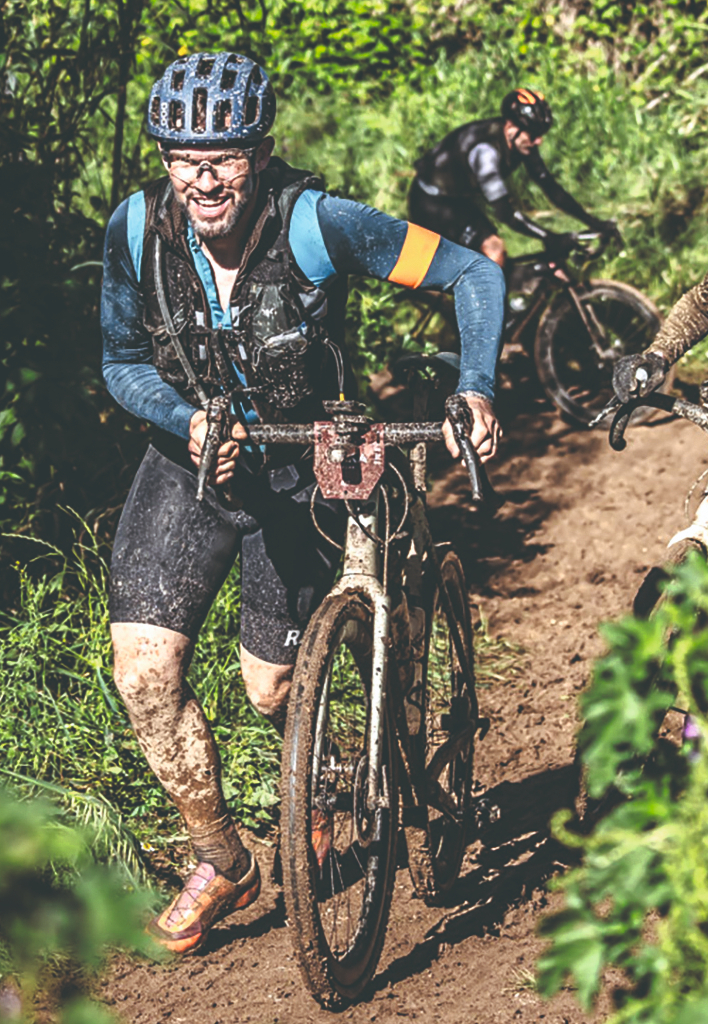
Roughing it for 342km in the Spanish wilds was a tough but intoxicating experience
The ride in numbers
Distance: 342km
Ascent: 3,741m
Total moving time: 15hr 40min 10sec
Total ride time: 16hr 40min 16sec
Calories burnt: 12,082kcal
Average HR: 135bpm
Max HR: 189bpm
Caught short
The combination of staying consistent with these three pillars over the course of almost four months meant that, prior to heading to Spain, my weight had dropped by 5.5kg to 94.5kg, while my FTP had increased by 68W to 388W, giving me a vastly improved power-to- weight of 4.1W/kg, the highest it had ever been – a PB at 40 years old! Above and beyond the numbers, the entire process had given me a huge degree of confidence and self-belief, which played into the final piece of the jigsaw.
Previously I’d been guilty of heading into long events without being fully prepared mentally, or at least more concerned with the end result than what it would take to achieve it. But with age comes experience, so I devised a detailed game plan that outlined what my objective was, gave me a race motto to focus on, allowed me to address issues and challenges that occurred well before they actually happened and, finally, presented to myself evidence from past experiences that supported my mindset of ‘I can and will do this’.
Instead of spending time each day visualising crossing the finish line and how that moment would feel, I pictured all of the ‘what if, worst case’ scenarios so that I was mentally prepared for any eventuality. Of all the aspects of preparing for a major event, it’s mindset and mental strength that are most often overlooked – though they are arguably the most important factors come race day. Everything I had worked on, both on and off the bike, meant that I was ready for the race... But then, the day before the scheduled start, it was cancelled.
Heavy snowfall and torrential rain meant that the Traka’s high mountain passes were unrideable, and the multiple points where we would be required to cross rivers on foot were unsafe, resulting in the 560km edition’s last-minute cancellation. It was the one scenario my game-plan hadn’t allowed for. Thankfully I was offered the chance to take on the 360km route instead – itself shortened by 20km due to the adverse weather – ensuring that four months of meticulous training would not go to waste. I would still be riding for almost a full day non-stop – none of those endurance reserves I’d built up would go to waste. There was no time to lament, anyway, with just 24 hours until the start.
With my bike and kit prepped the night before, there was just one thing left to do when my alarm screamed at 4:30am: wolf down as much porridge as I could stomach, before making my way to the start. Joining the 800 other riders, an intoxicating buzz of energy filled the air as the minutes and seconds counted down until finally the wait was over. Four simple words rolled around my head as the race began: eat, drink, pedal, repeat.
Once clear of Girona, the route rose gradually for 10km before a slippery descent leads to the open plains over which the course heads north for the best part of 100km. Working with a group of stout Dutch riders, and sticking to my simple mantra, I felt strong reaching the first feed station after a little over four hours. It was here that the crux of the route began, 50km of rough terrain containing a series of demanding climbs and a hellish hike-a-bike. I knew this was no place to be pegged to someone else’s pace, so I bid my companions farewell and settled into a steady tempo. A little over three hours later and I was back on the flat, eager to press on, only to find a stiff headwind thwarting my progress.
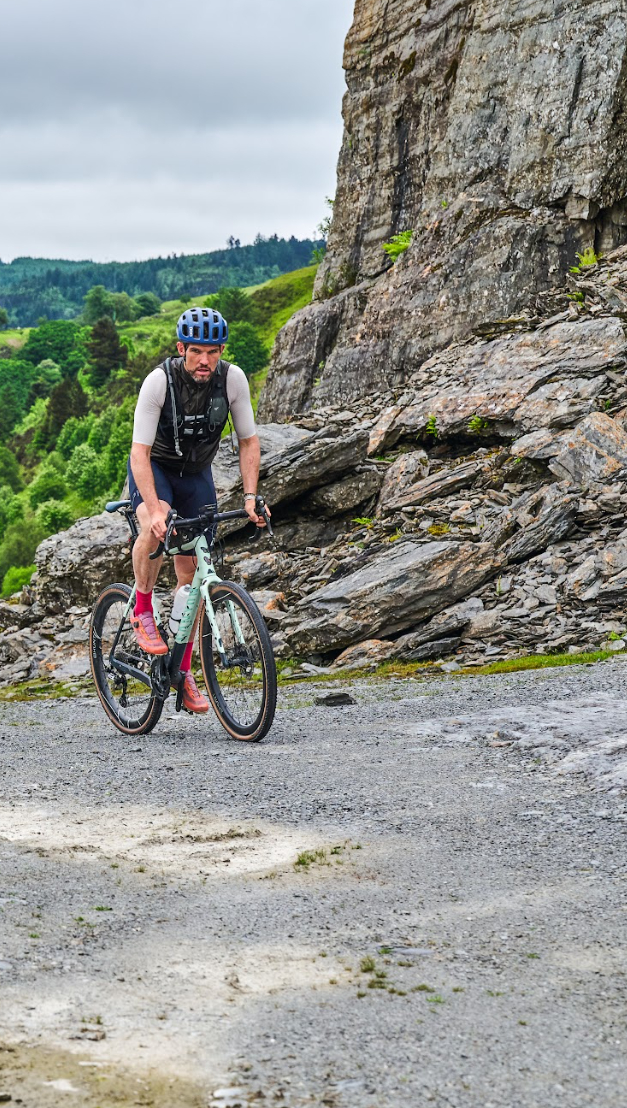
A solid training plan set up Leach for an epic success
How to take on an epic challenge at 40-plus
Drop the ego. Don’t get hung up on what your FTP or weight used to be 10 years ago. Your current numbers are just a baseline from which to move forward.
Stick to the plan. Get a training and nutrition plan that works for you and your life commitments, and stick to it.
Ask for help. Taking on a big challenge can be daunting, so speak to people who’ve done it before. Cyclists are a friendly bunch and almost always willing to off er advice and share experience.
Trust in the process. Progress can sometimes seem slow, but it’s still progress and the results will come eventually.
Mindset is everything. There will be ups and downs; what matters most is how we react to them.
Stay in the moment. During the race, a simple race mantra such as the one I used (“eat, drink, pedal, repeat”) can be really helpful.
Enjoy it! It’s about the journey as much as the destination. Rising to the challenge will make you stronger, provided you can commit to the processes required.
The next four hours proved unrelentingly tough and I started losing focus for the first time. I battled on, riding alone, until mercifully the final feed station came into sight, a chance to refuel with three hearty bowls of pasta and take a moment to galvanise myself for what still lay ahead: 80km, two big climbs and a long technical run to the finish. Far from plunging my mind into darkness, the fall of night brought with it a euphoric energy that ensured the remaining kilometres slid by without incident, my legs content to keep spinning until the lights of Girona appeared through the woods, signalling that the end was nigh. There was a strange sense of unfinished business as I crossed the finish line, almost 17 hours after setting out, for though I wasn’t exactly fresh, my body and mind still felt strong, yearning for the extra 200km that had been the original goal. The race was won by former WorldTour pro Peter Stetina, in an incredible 11 hours and 42 minutes.
The danger upon reaching the finish line of any big goal event is thinking that it’s the end of the journey. Standing under the glaring lights of the finish, I sensed that this was only the start. Perhaps my best years are not yet behind me, I dared to dream. This monumental endurance challenge – though shorter than originally planned – had expanded my conception of what is possible for me as an over-40 with limited training time. As I look ahead to 2025, that means setting my sights on Tour des Stations in Switzerland, a ride that boasts over 8,000m of climbing in just 242km. Whatever your target, provided you fully commit, the chances are you won’t regret it – even if there’s a last-minute course change.
Marcus Leach is currently exploring the world in a motorhome with his family, while searching for epic cycling routes.
